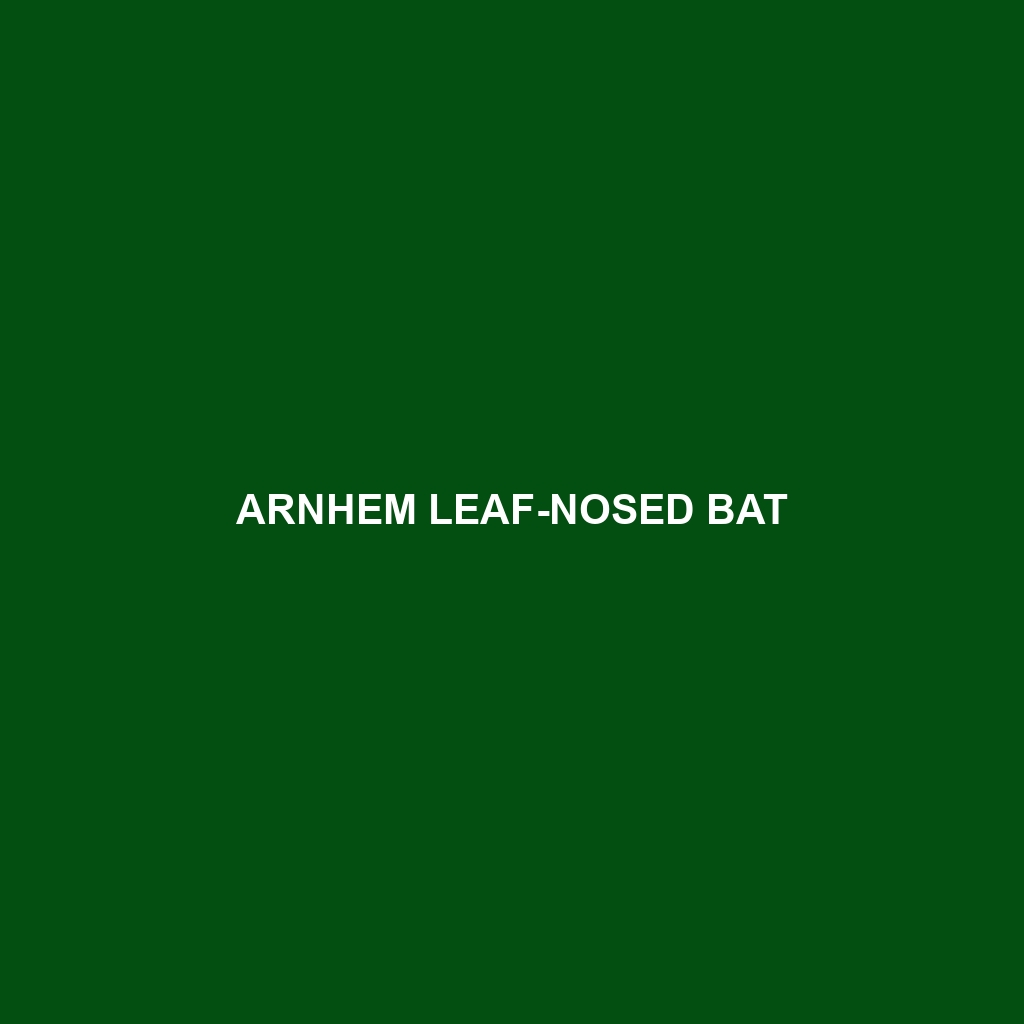Arnhem Leaf-nosed Bat
Common Name: Arnhem Leaf-nosed Bat
Scientific Name: Hipposideros setwokai
Habitat
The Arnhem Leaf-nosed Bat is primarily found in the tropical and subtropical forests of northern Australia, particularly in the Arnhem Land region of the Northern Territory. This species thrives in humid environments, favoring habitats with abundant vegetation and proximity to water sources, such as rivers and wetlands. These bats are often roosting in caves, rock crevices, and dense foliage, contributing to their overall survival.
Physical Characteristics
The Arnhem Leaf-nosed Bat is characterized by its medium size, typically measuring around 4.5 to 8 cm in body length with a wingspan reaching up to 30 cm. The fur is a striking mix of brown and grey, providing excellent camouflage against the tree bark of its forested habitat. A distinctive feature of this bat is its unique noseleaf structure, which resembles a leaf and aids in echolocation. Their large, rounded ears are also notable, enhancing their ability to navigate in low-light conditions.
Behavior
Arnhem Leaf-nosed Bats exhibit nocturnal behavior, emerging at dusk to forage for food. They are social animals, often roosting in colonies that can number in the hundreds. Their flight is characterized by agile maneuvers, allowing them to skillfully navigate through dense forest canopies while utilizing echolocation to locate prey. During the day, they can often be seen hanging upside down in their roosts, conserving energy until evening.
Diet
This species primarily feeds on a diet of insects, particularly moths and beetles, which constitute the majority of their intake. The Arnhem Leaf-nosed Bat employs echolocation to detect and capture flying insects mid-air. Their feeding habits play a crucial role in controlling insect populations within their ecosystem, making them vital for maintaining ecological balance.
Reproduction
Breeding for the Arnhem Leaf-nosed Bat typically occurs from late spring to early summer, coinciding with peak food availability. Females usually give birth to a single pup after a gestation period of about two months. After birth, the mother will care for the pup, which becomes independent after several weeks. The social structure within roosting colonies can enhance protection for the young during this vulnerable stage.
Conservation Status
The Arnhem Leaf-nosed Bat is currently classified as vulnerable according to the International Union for Conservation of Nature (IUCN). Threats to its population include habitat loss due to deforestation and climate change, which jeopardizes their natural habitats. Conservation efforts are crucial to protect this species and its environment.
Interesting Facts
This bat species is known for its remarkable ability to produce complex echolocation calls, allowing them to navigate in total darkness. Additionally, the Arnhem Leaf-nosed Bat has a unique social behavior; they engage in communal grooming to strengthen social bonds within the colony.
Role in Ecosystem
The Arnhem Leaf-nosed Bat plays a vital role in its ecosystem as a pollinator and pest controller. By consuming large quantities of insects, they help in maintaining a balance within their environment. Furthermore, their feeding habits can contribute to the dispersal of seeds, promoting plant diversity and contributing to the overall health of their forest habitats.
